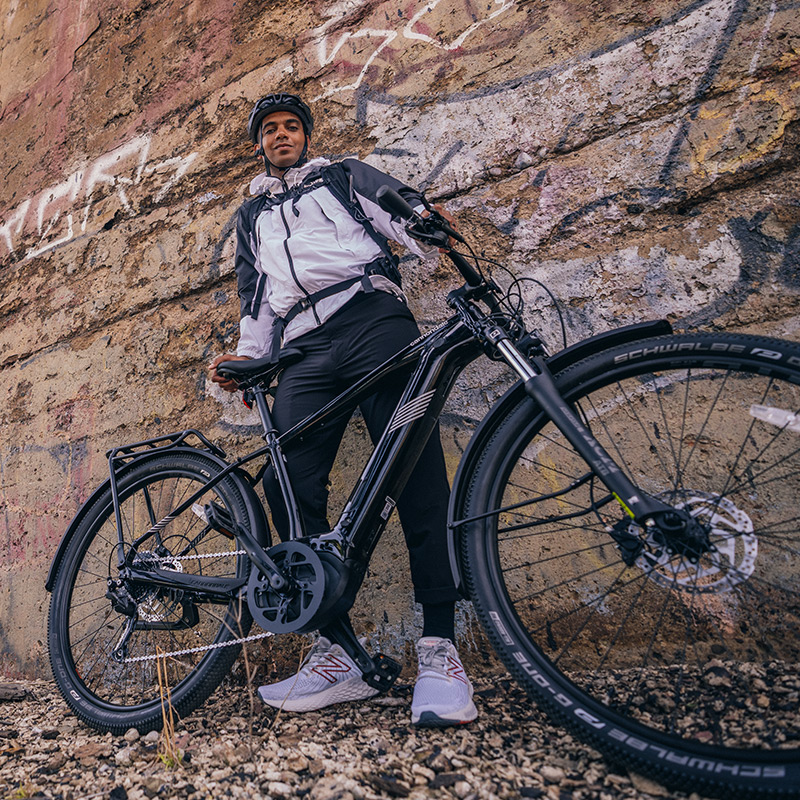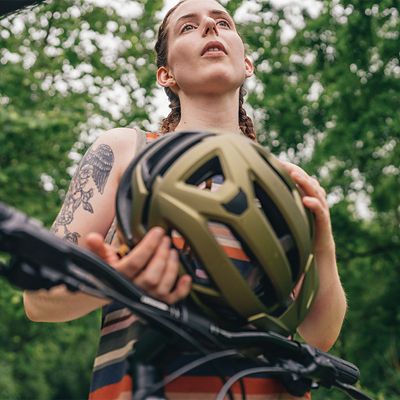
A bike that’s adjusted to your specific build improves comfort and reduces post-ride soreness, while making your pedaling more efficient. Whatever kind of biking you’re doing—road, mountain, commuting, gravel—you need a bike that works with your body, your flexibility, and your riding style. While many bike shops offer a professional fit, it pays to understand the process so you can do it at home or get the most out of the in-store experience. And beware that for years bike fitting advice was based on what pro cyclists needed, which wasn’t always the best advice for recreational riders. Focus on comfort. Here’s how:
Start By Asking a Few Questions
- What kind of riding do I do?
Knowing your riding style and discipline will help you get the best fit. - Do I have someone who can help me?
While it’s possible to do much of this bike fit yourself, it will be far easier if you have someone who can help you. - Do I have the right tools?
You will likely need a set of Allen wrenches, a tape measure, and a plumb line (which can easily be made with a weight on a string). - Do I have my riding gear with me?
Do your bike fit in the gear you will ride in, including your riding shoes.
Reach
You want to start with the correct frame size, which affects reach—the distance between the saddle and handlebars. Most bike models come in small, medium, and large sizes (some use numerical measurements in centimeters). The right frame size will get you in the ballpark for fine tuning. The sizes generally correspond to your height and inseam, and most manufacturers provide a sizing chart. When you test ride a bike, if it feels immediately awkward it’s probably the wrong frame size. Your goal is to be able to reach the handlebars comfortably, with your arms slightly bent.
Standover Height
With the right frame size, you should be able to stand over the bike, feet flat on the ground, and have an inch or two of clearance between the top tube and your crotch. With mountain bikes you want a little more clearance, with road bikes a little less. Some bikes have a sloping top tube, which makes measuring clearance more art than science. Use common sense: Can you put your feet on the ground without inviting injury?
Foot Position
Your feet are one of the main connection points to your bicycle. If you're using flat pedals there are likely no adjustments to make. But if you’re clipping into your bike, the location and angle of your cleat on your shoe is an important part of bike fit. If it’s off, you may experience pain in the back or side of your knees, your hips, or even your lower back.
You want the center of your cleat beneath the ball of your foot. Check it: Feel for the bones on the outside of your feet near the base of your big toe and pinky toe. Imagine a line between the two of them and place the center of your cleat directly on that line.
You want the cleat positioned so that your feet attach to the pedal at a natural angle. To check this, sit and hang your feet off of the edge of a table or ledge, and have a friend assess the angle of your feet when they’re hanging naturally. Try to mimic this with your cleats. Go on short rides to see how your legs feel and adjust as needed. If the angle is wrong you’ll likely feel pain in your knee.
Seat Height
Your optimum seat height will be similar between mountain bikes, road bikes, and recreational bikes. While there will be minor adjustments for things like the types of pedals and shoes you use, it should be about the same as measured from the center of the bottom bracket to the top of the seat. A common method for finding the right distance is to measure your inseam and then multiply that by 0.885.
You can also do this without a tape measure. Have a friend hold your bike up. Get on your saddle. With the pedal at its lowest position, your heel should comfortably reach the pedal with your leg fully extended. When you’re riding, with the ball of your foot on the pedal, you should have a slight bend in your knee at the bottom of your pedal stroke.





